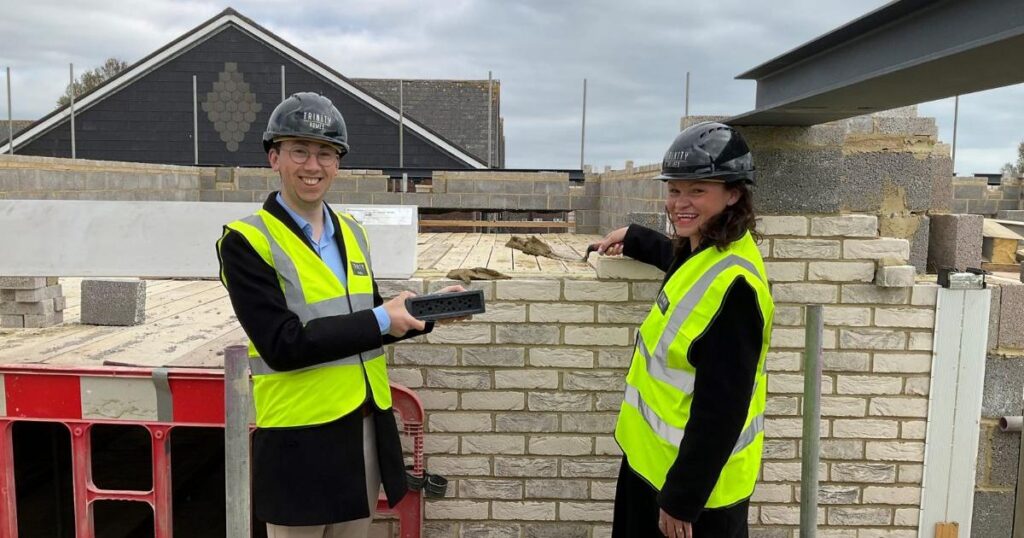The Brickfields development, built on the site of the former Knoll House in Hove’s Ingram Crescent, will provide long-term affordable accommodation for people with physical disabilities and brain injuries.
The work on the site started last summer and is due to be completed in 2026.
The bee bricks and swift bricks will be installed to help conserve and enhance biodiversity, protecting it from the impacts of development.
Bee bricks can be used in place of standard bricks in construction to provide some much-needed nesting and hibernation space for solitary bee species such as the red mason and leafcutter.
Solitary bees are essential for pollinating a significant portion of our food crops and wildflowers.
They do not produce honey, are non-aggressive, don’t live in hives and don’t swarm.
Swift bricks provide valuable nesting space for these fast-flying birds.
Between 1995 and 2021 swift populations fell by 62 per cent in the UK, partly due to the loss of suitable nesting sites.
These bee and swift bricks will be installed adjacent to landscape planting that provides a good quality foraging habitat, which includes biodiverse green roofs.
To further support the local ecosystem, the landscaping on site will include native planting as well as integrate trellises and climbing plants on the building’s walls.
Raised planters will also be installed across the scheme to allow residents to enjoy gardening, growing vegetables or flowers.
As part of the social value of the development, Trinity Homes will work with the neighbours to improve the Ingram Crescent community garden.
The Brickfields scheme will deliver 28 apartments for independent living accommodation for people with physical disabilities and acquired brain injuries, together with associated communal space, and accommodation for staff to provide 24-hour care and support on-site.
Some units will be specifically for people aged 18 to 25, and two have been designed for bariatric residents.
All the apartments will be wheelchair accessible and have dual-aspect orientations to ensure optimal levels of daylight, privacy and shading.
The building’s generous balconies provide private outdoor space for each flat; residents can also enjoy communal gardens on the ground floor and roof terrace, which are wheelchair accessible throughout.
The design also improves accessibility to existing pathways and will provide additional handrails around the site.
The development has been designed to be energy efficient to reduce energy consumption and save residents’ money on bills.
This includes air source heat pumps for efficient communal heating, mechanical ventilation with heat recovery, and low-energy lighting.
The development will also provide new apprenticeship starts and opportunities for students to start and complete NVQ qualifications.
Local school and university students will also have the opportunity to engage with the development through site visits, career talks and work placements.
The innovative design of the supported-living scheme has recently been recognised by a prestigious Housing Design Award.
Council leader Bella Sankey said: “It’s great to see the new bee and swift bricks enhance the emerging layout and support local ecosystem as the exciting Brickfields scheme continues to come alive.
“The development will deliver much-needed supported accommodation and fantastic affordable and sustainable homes that will be a wonderful place to live – and somewhere we could all be really proud of.
“I’m very pleased with the progress of the construction, which is running on schedule, and I’d like to thank residents in the neighbouring area for their patience as the project takes shape.”
Source link
[Featured]
[Just In]




